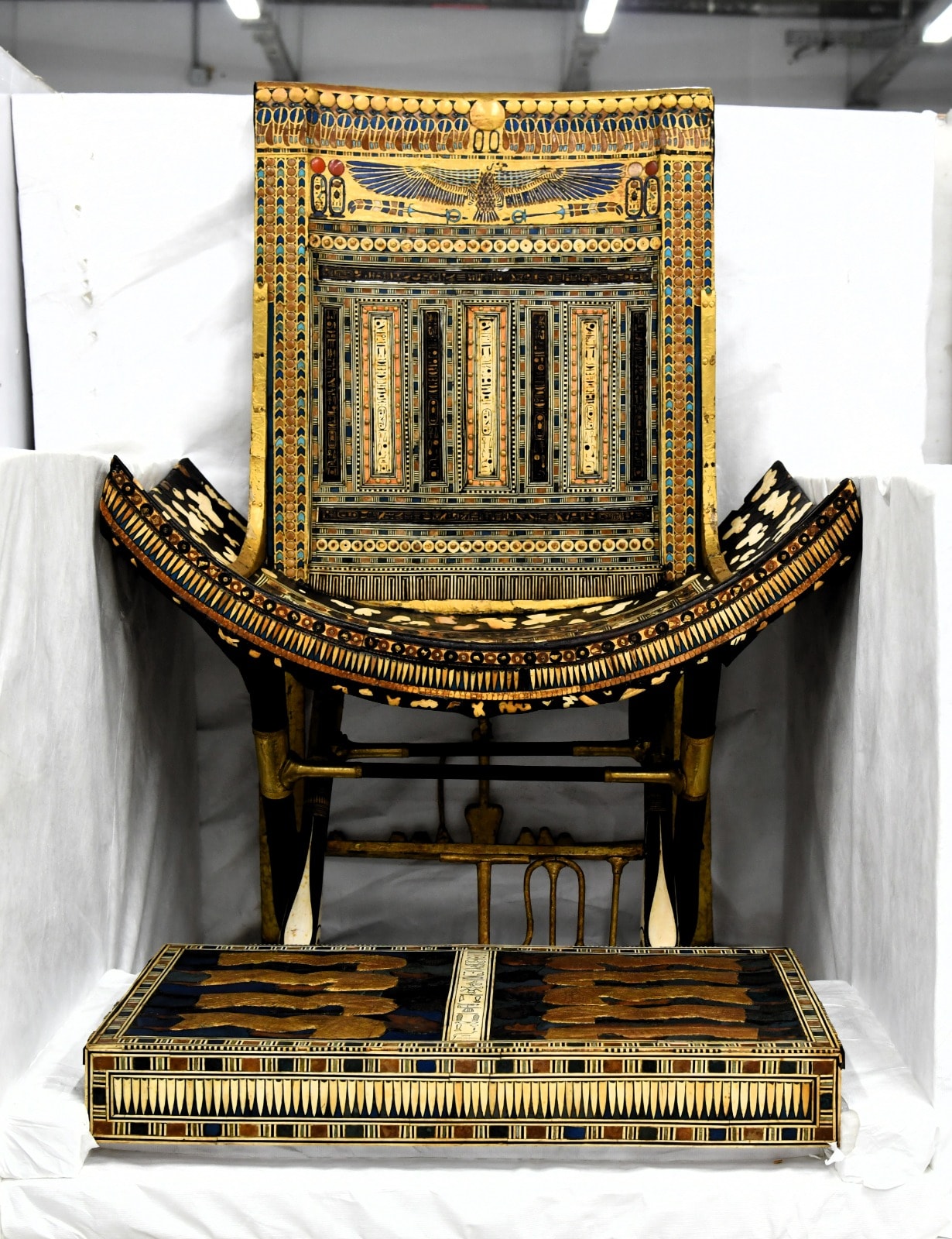163 Treasures of Tutankhamun arrive at the Grand Egyptian Museum
Wednesday, May 14, 2025

The Grand Egyptian Museum in Cairo has received 163 priceless artifacts from the treasures of King Tutankhamun.
The pieces, transferred from the Egyptian Museum in Tahrir, are part of a plan to exhibit the complete Tutankhamun collection together for the first time in one location.
Egyptian Minister of Tourism and Antiquities, Sherif Fathy, personally inspected several of the newly arrived artifacts during a visit to the museum’s conservation lab. He confirmed that this step is part of the final preparations for the museum’s official inauguration, set for July 3rd.
He added that the remaining artifacts from Tutankhamun’s collection will continue to be transferred in stages, following a strict schedule, to be displayed in their dedicated exhibition halls.
Dr. Ghoneim, CEO of the Grand Egyptian Museum Authority, emphasized that the transfer was carried out to the highest international scientific and technical standards. Each piece underwent a detailed condition assessment, with meticulous packaging and handling by the museum’s expert team.
The museum’s restoration specialists will now begin essential conservation work to prepare the artifacts for permanent display, ensuring a world-class exhibition that reflects the historic and cultural significance of King Tutankhamun.
During the visit, Dr. Mohamed Ismail Khaled, Secretary General of the Supreme Council of Antiquities, gave the minister an in-depth briefing on some of the most iconic pieces, including the famous ceremonial chair discovered in the passageway to the tomb, the gilded wooden shrine for the canopic jars, and a stunning array of gold and carnelian jewelry.
The ceremonial chair is hailed as one of the finest masterpieces of New Kingdom artistry.
It is inlaid with ivory, ebony, faience, and gold. At its center, the sun disk is flanked by the protective wings of the goddess Nekhbet, while the footrest is decorated with golden panels depicting Egypt’s traditional enemies beneath the king’s feet—a powerful symbol of his might.
Main Image: Ceremonial Chair, Courtesy GEM
